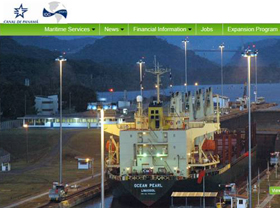Panama, ports and the future

By David Jessop
Tweet
Tweet
In the last few years almost every significant Caribbean country has announced that they are upgrading their port facilities and preparing to compete to attract the larger post-Panamax vessels that from some time in 2015 will be transiting an enlarged Panama Canal.
Such is the opportunity, given the Caribbean’s strategic location at the cross roads of north-south and east-west trade, and its numerous existing or new locations for deepwater ports, that Jamaica, Martinique, Cuba, Trinidad, the Bahamas and the Dominican Republic have all made clear, that with the support of one or another foreign investor, port development will become critical to future growth.
However, what is still far from certain is whether there is enough opportunity for all of the existing or proposed super ports, hubs, and manufacturing and transhipment zones to succeed.
Winners from the new Canal
Viewed from another perspective, the more one speaks to experts, the less clear it is whether the winners will be those who have made an early start; those that are encouraging investment in co-located assembly, manufacturing and services, as well as transhipment; or those who have internationally respected marketing partners or shipping lines that can ensure success.
This is not to argue that any particular proposal is unviable, but to suggest that these are among the factors, along with competitive rates, high levels of productivity, and a straightforward regulatory environment, that will enable the Caribbean to take advantage of its physical location.
The issue of viability is far from simple as there are also other factors at play including
- the deepening and enlargement of a number of already competitive US east coast ports;
- vast ‘capesize’ vessels now being constructed by major shipping lines like Maersk that will, as their name suggests, sail far to the south and not pass through the Caribbean;
- plans for new trans-American rail links;
- and the possibility of a new Chinese financed canal across Nicaragua.
Which is to say little about possible delays to investment in the Caribbean and other parts of the world as a result of structural changes in China’s economy as it starts to address its own financial and economic problems by restricting credit for overseas investments.
North Caribbean port gains
This suggests that the most likely long-term winners may be Jamaica and Cuba, for very different reasons, plus the Bahamas and the Dominican Republic which already have an established business and the benefit respectively of Hutchison Wamphoa and Dubai Ports as operators.
It seems also to point to success for those ports further south like Curacao that are seeking niches in ship repair and are known to be efficient, and proposals such as those in relatively embryonic form in Guyana and Suriname for ports linked to opening up parts of Brazil.
Although Jamaica has come late to the party, its geographic location, virgin deepwater site and its plans to become a logistics hub, suggest success if it can mobilise the investment necessary to develop a related manufacturing base and ensure that that Jamaican’s benefit from employment, not just in the construction phase, but from all subsequent economic activity.
Assembling around Cuba
Cuba’s new port at Mariel is another interesting example of forward thinking.
Because of the restrictions on trade as a result of the US embargo, the creation of the development zone around it is potentially far more important.
In the 180 square miles surrounding the port of Mariel, Cuba plans not just to encourage foreign owned high-tech assembly and manufacturing - the large Chinese car company Geely International is interested in an assembly operation there - but also sees the site, and others planned elsewhere
- as locations for joint ventures in research and services;
- as a new quasi-offshore home for overseas investment in leisure facilities and villas;
- and has established preferential tax laws relating for operations in such zones.
It is probably also no coincidence that the first vessel to unload its cargo in Mariel was a US flag carrier with a cargo of food from the US being sold under licence; an indication of what one day Mariel might become, given its location just 28 miles from Havana and 240 miles from Miami.
Looking outwards
Port development requires the Caribbean to look outwards, make use of natural advantage on globally competitive terms and be future proofed for at least twenty to thirty years.
As this column noted last week, in the longer term the nature of future development and investment will be very different as machines begin to take over many everyday tasks, making even the most productive low cost and unskilled labour less relevant.
Already many of the activities in the most efficient container ports are computerised.
This means that what is required is for a port to be seen either, as is the case in Cuba and Jamaica, as a way of stimulating use of the country as an offshore location for everything from manufacturing to research and services, or as in very different ways, Guyana and Suriname see their future port development as opening up opportunity for others - in their case Brazil and China.
Put another way, port development, if well considered, conforms to a model that recognises the limitations of the Caribbean’s size, resource and geography, does not look back, eschews aspects of sovereignty, accepts globalisation, and pragmatically accepts that the Caribbean’s future role is as a facilitator for others whether they be tourists or socially responsible multinationals.
This is a message that much of the region’s private sector and particularly small island governments have yet to embrace.
It implies that the Caribbean economy of the future has to be less protectionist and defensive, become skills and knowledge based, and relentlessly focus on education at tertiary and higher levels, to build skills for tomorrow.
David Jessop is the Director of the Caribbean Council and can be contacted at
Previous columns can be found at www.caribbean-council.org
14 February 2014
